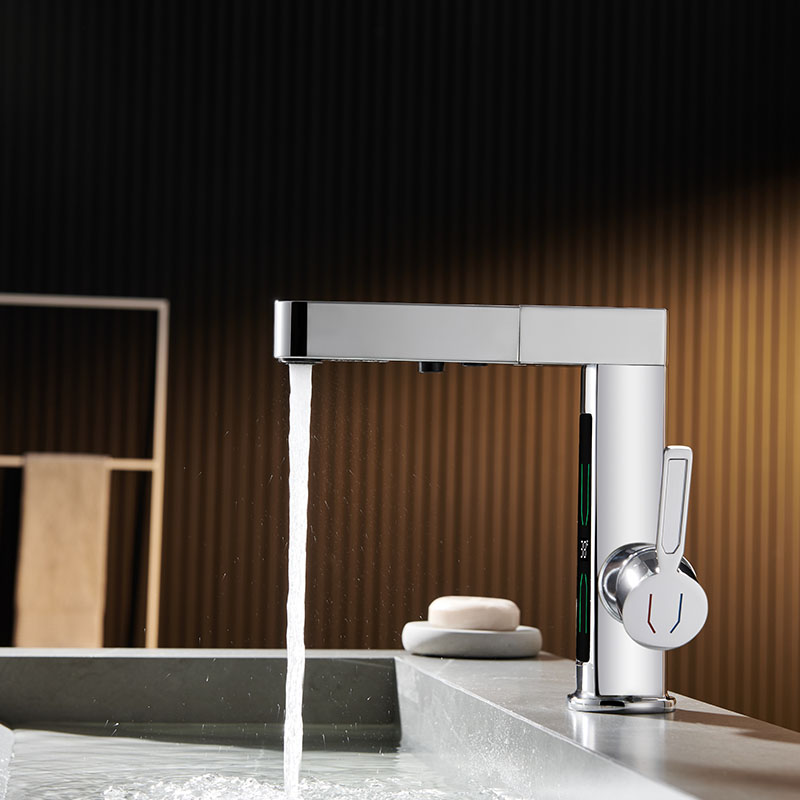Application Scenarios And Benefit Analysis Of Intelligent Manufacturing Technology in Sanitary Ware Production
With the in-depth promotion of Industry 4.0, intelligent manufacturing technology is becoming the core driving force for the transformation and upgrading of the sanitary ware industry. Through the integrated application of technologies such as Industrial Internet of Things (IIoT), artificial intelligence (AI), and robotic automation, sanitary ware companies have not only achieved a leap in production efficiency and product quality, but also made significant breakthroughs in cost control, resource utilization and market response speed.
1. Core application scenarios of intelligent manufacturing technology
Industrial Internet of Things (IIoT): full-link data connection and real-time monitoring
Industrial Internet of Things realizes digital monitoring of the entire production process by deploying sensors and RFID tags in production equipment, material pallets and finished products.
Artificial Intelligence (AI): Intelligent Quality Inspection and Process Optimization
AI visual inspection technology is replacing traditional manual quality inspection. Through 3D line scan cameras and deep learning algorithms, the system can identify 0.1mm bubbles or scratches on the toilet glaze, with a missed detection rate of less than 0.01%. After a company introduced AI quality inspection, the proportion of manual re-inspection dropped from 30% to 5%, saving more than 2 million yuan in annual costs. In addition, AI algorithms can also analyze production data and dynamically adjust the path of spraying robots, increasing the utilization rate of glaze from 65% to 92%.
Robotic automation: flexible production and precise assembly
The collaboration between collaborative robots and AGVs has realized the flexibility and unmanned production of bathroom products. For example, a faucet hardware factory uses a six-axis robot in the polishing process, and uses a force control sensor to ensure that the surface roughness is ≤0.4μm, which is 5 times more accurate than manual work and 30% more efficient. The AGV logistics system dynamically dispatches materials according to MES instructions, and the on-time delivery rate reaches 98%.
Digital twin: virtual commissioning and process simulation
Building a digital twin model of the production line can simulate the impact of equipment parameter adjustment in a virtual environment. A company optimized the trajectory of the glaze spraying robot through simulation, shortened the commissioning cycle from two weeks to two days, and reduced glaze waste by 15%. Digital twins are also used to predict equipment failures.
3D printing: rapid prototyping and customized production
Metal 3D printing technology can form shower heads with complex structures in one piece, reduce the welding process of traditional casting, and improve the product's pressure resistance by 35%.

2. Comprehensive Benefit Analysis of Intelligent Manufacturing
Economic Benefits: Cost Reduction, Efficiency Improvement and Quality Transition
Cost Optimization: Through predictive maintenance and energy management platforms, equipment maintenance costs are reduced by 25%, and electricity expenses are reduced by 18%;
Efficiency Improvement: Flexible production lines support rapid switching of small batch orders, and delivery cycles are shortened from 45 days to 22 days;
Quality Improvement: AI quality inspection reduces product defect rate from 5% to 0.5%, and customer return rate drops by 70%.
Social Benefits: Green Manufacturing and Resource Circulation
Energy Saving and Emission Reduction: The kiln waste heat recovery system reduces carbon emissions by 1,200 tons per year, equivalent to planting 65,000 trees;
Material Circulation: After disassembling waste bathroom products, the utilization rate of recycled copper reaches 90%, and resource consumption is reduced by 40%.
Market Benefits: Agile Response and Brand Value-Added
Customization Capability: 3D printing technology supports user participation in design, meets personalized needs, and increases order conversion rate by 50%;
Brand Premium: Through the "Zero Defect Manufacturing" label and carbon footprint certification, the product has a premium of 15%-30% in the international market.
3. Challenges and future directions
Despite the significant benefits, smart manufacturing in the sanitary ware industry still faces challenges:
High technical costs: The cost of digital transformation for small and medium-sized enterprises exceeds 5 million yuan, and they need to rely on government subsidies or industrial chain collaboration;
Data security risks: Leakage of production data may lead to intellectual property disputes, and blockchain encryption and access control need to be strengthened.
Future technology integration directions include:
5G+edge computing: achieving millisecond-level equipment control and promoting unmanned dangerous processes;
AI-driven on-demand manufacturing: users customize products through APP, the system automatically generates production instructions, and inventory approaches zero;
Carbon-neutral factory: photovoltaic roofs are combined with hydrogen kilns to achieve the "zero carbon" goal on the production side by 2030.


